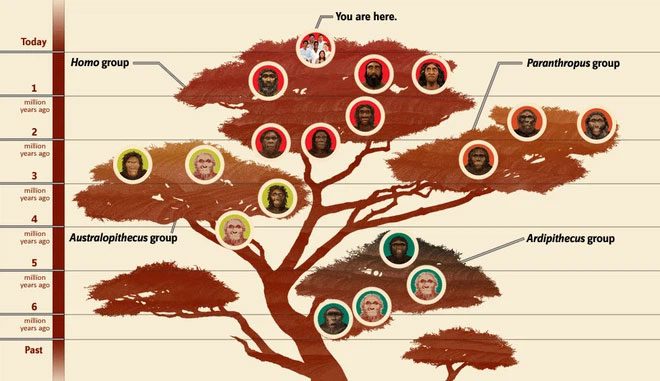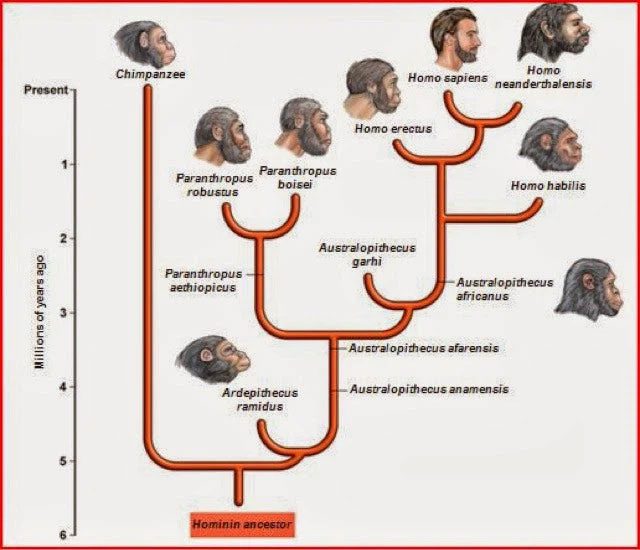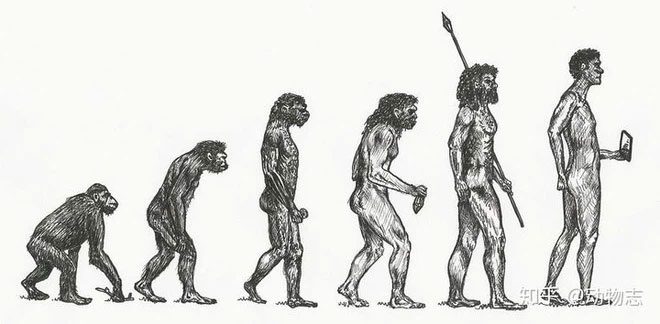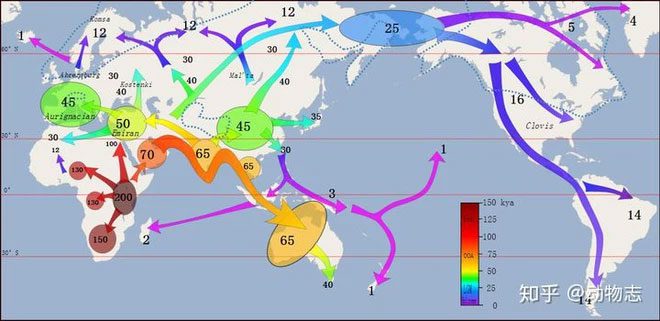Humans are primates and the highest order of animals on the planet, yet we are also among the most “lonely” creatures on Earth.
Most animal species on our planet have close relatives. For example, Canis includes seven species such as wolves and wild dogs; Bos includes five species such as domestic cattle, white-tailed deer, and yaks; Mus musculus has nearly 40 species, while Rattus boasts over 60 types.
However, modern humans, Homo sapiens, are the only surviving species of the genus Homo, with our closest living relatives being the chimpanzees. The divergence between us and chimpanzees occurred approximately 700 million years ago—thus, despite being called our closest relatives, the distance between us is considerable.
In the past, Homo sapiens were not as lonely as they are today. In ancient times, numerous human species coexisted, including Homo erectus, Neanderthals, and Floresiensis, among others. Subsequently, these species became extinct, and no new human species emerged, making us the sole surviving species on Earth. So why did this happen?


In the past, Homo sapiens were not as lonely as they are today.
The evolution of modern humans unfolded across four stages: Australopithecus → Homo habilis → Homo erectus → Homo sapiens. The genus Homo originated from the African savannah. Subsequently, enhanced adaptability to the environment and a growing population spurred human migration and opened new living spaces. At least four lines of migration have occurred in the evolutionary history of humans.
Early prehistoric migrations began when Homo erectus first migrated out of Africa through the Levantine corridor and the Horn of Africa into the Eurasian continent. Fossils of ancient hominins have been found in Africa, China, and Australia. The earliest fossils in China may date back around 2.1 million years.
Approximately 1.8 million years ago, the earliest known Homo erectus appeared in the Caucasus and Africa. The Yuanmou, Lantian, and Pekingese people in China belong to Homo erectus. However, the Homo erectus in Eurasia later became extinct due to their inability to adapt to the environment, while Homo erectus hiding in Africa evolved into Homo heidelbergensis and Homo sapiens.

The evolution of humanity: primitive hominins → Australopithecus → Homo erectus → Neanderthal, Homo sapiens.
800,000 years ago, Heidelbergers crossed the Strait of Gibraltar into Southern Europe. The descendants of Heidelbergers are the Neanderthals, who later expanded their habitat into Western and Central Asia, dominating these regions until about 40,000 years ago.
About 135,000 years ago, the first Homo sapiens stepped out of Africa, following the “Northern Route”, entering the Middle East from the Sinai Peninsula, and then moving into Central and East Asia. The Liujiang people in China may be descendants of this group. However, the initial Homo sapiens could not adapt to the frigid environment in the northern part of the Ice Age, leading to their extinction or return to Africa.
70,000 years ago, Homo sapiens embarked on another journey to conquer the world, this time choosing the “Southern Route,” crossing the Mande Strait into the Arabian Peninsula. Between 65,000 and 50,000 years ago, they traversed the southern coast of Iran and reached India, where they established settlements and subsequently expanded into Southeast Asia and Australia.

Diagram of Homo sapiens conquering the world.
From about 50,000 years ago, humans reached a certain population scale and continued to expand their living environment. About 40,000 years ago, they replaced the Neanderthals and occupied Europe. They later entered the Americas via the Bering Land Bridge, completing their conquest of the world; these individuals are our direct ancestors.
Before modern humans, Homo erectus had spread across three continents: Europe, Asia, and Africa. If Homo erectus in those areas had evolved into modern humans in parallel with Homo erectus in Africa—this is the “parallel evolution theory”—then today there would be many different lineages and species of modern humans on Earth.
However, current genetic and fossil evidence supports the “replacement theory”, which posits that Homo erectus in Africa evolved into Homo sapiens, who then migrated out of Africa and replaced other human species across all regions of Eurasia, becoming the only human species on Earth today.
One of the most famous examples of the “replacement theory” is that Homo sapiens replaced Neanderthals in Europe and Western Asia. The tribes of Homo sapiens were larger and more populous. They were proficient in spoken language and had social structures as well as technologies and tools that were more advanced than those of Neanderthals, having invented weapons that could be thrown from a distance. Because of these advantages, Homo sapiens ultimately defeated the Neanderthals. Approximately 60,000 years ago, the two species clashed for the first time in present-day Israel and Iraq.
Fossils of Neanderthals killed by Homo sapiens have been found in both Iraq and France. Our ancestors may have exterminated many species during their expansion into new habitats. We do not know how many early humans were wiped out by our ancestors, but it is likely that they were the primary cause of their extinction.
Humans can inhabit any nook and cranny on Earth. As the saying goes, a mountain cannot accommodate two tigers, and perhaps this is true for our ancestors, as there cannot be two human species on the same planet.





















































